Watch: “Becca Biderman’s Barley Field CONFIRMED!”
Shalom and welcome! My name is Norman Willis, and I am with Nazarene Israel. My guest here today is sister Becca Biderman, and she is in the land of Israel. She is a witness to both the barley and the new moons in the land of Israel. One of the things that I do as the apostle and in the priesthood for Nazarene Israel, my job as I understand it, is that I need to qualify the witnesses to the aviv barley. I also need to qualify the witnesses to the new moon so that we can know, when do we start the new year, when do we declare the new year for our people? It is a difficult situation every year, every year there is a big discussion and a big to-do and a big row. One of the things has been such a blessing is that sister Becca has been very helpful to us and she has helped us in many things. She is communicative, she will talk with us, and she has answered questions. Let me explain.
We know of five witnesses to the barley in the land of Israel. One is a very nice man, but he will declare on anything: wheat, oats, barley, does not matter. We cannot use that. There are four other remaining groups that will declare on the barley alone and it is a complex, difficult situation. Even for those of us who study the barley, we must study it in depth to understand how it goes. Some of the groups object vehemently even to being mentioned. There is one group that is a Karaite group, however she says that she is not a representative of the Karaites. We do not like to mention names but, in this case, she does not want us to say she is a representative of the Karaites. Therefore, her name is Devorah Gordon, and she is of Devorah’s Date Tree. We will talk more about her witness because what we are trying to do in this video is to qualify Becca’s witness and there has been some controversy going on. First, we want to qualify Becca’s witness regarding the barley field and then from there we are going to come back to Devorah Gordon and Devorah’s Date Tree.
I should mention Devorah has a different definition of aviv than we do, to us her definition seems far too advanced. Her definition of aviv seems like it is within a day or two of ‘modern combine ripe‘ which to us is far too advanced. It is basically brown to golden-brown barley. Our understanding, according to Strong’s, is that aviv barley is “tender, young and green“.
Then there are two messianic brothers who also inspect the land, the two Brians. They also have a definition of aviv that is within a day or two of ‘modern combine ripe‘, it is not tender, young, or green. We were looking for aviv barley as being tender young and green. Originally, we were looking at that as the ‘soft dough stage‘ because soft dough can be parched. Becca helped us to understand that to fulfill Leviticus 2 vs 14-15, not only does it need to be parchable, but it also needs to be grindable into flour (viable). For it to be ground into flour it needs to be at least the ‘medium dough stage‘.
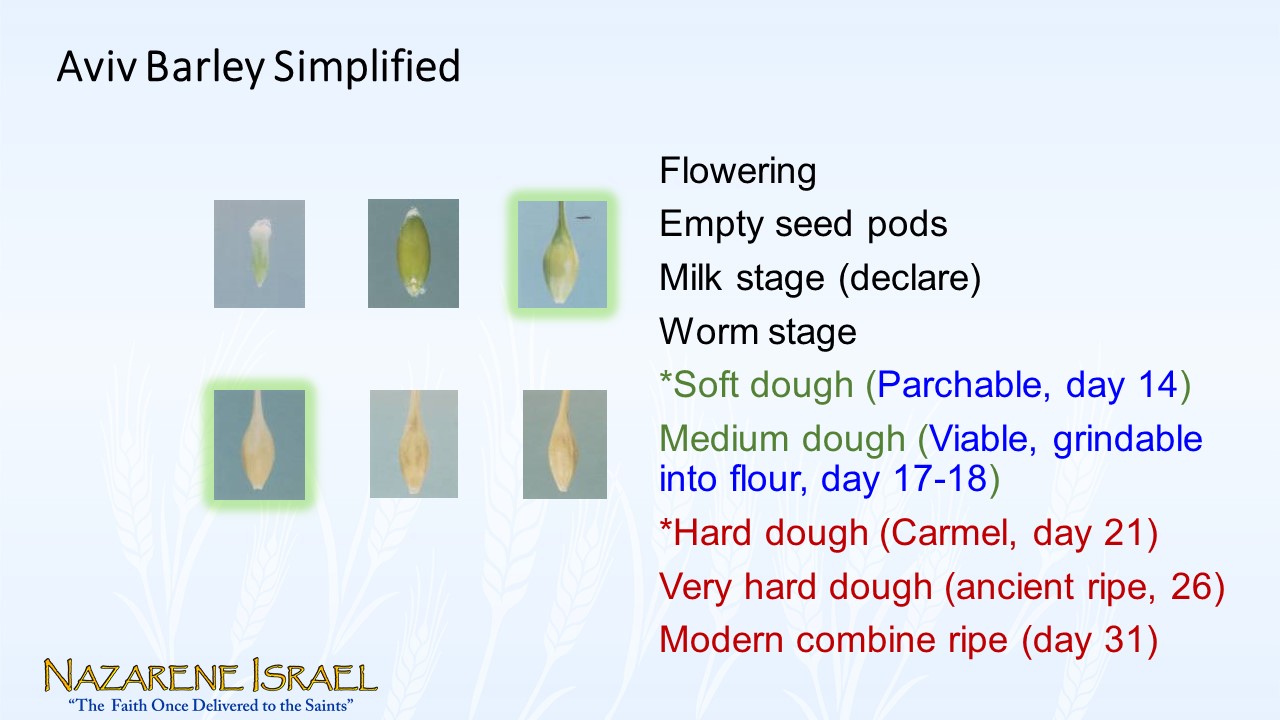
Becca talks a lot about this on her Facebook page.
So, we have the job in qualifying the year. Ideally, we want at least two, preferably three or more witnesses that are all qualified. They will all have the same definitions, this kind of a thing. The reason the barley is so confusing every year, at least in my understanding is this. There are four different groups with three different definitions, and then the two other groups have a definition that we cannot understand. We write them questions. We send them emails and ask them questions and they do not correspond. They do not talk with us, but Becca will correspond with us. She helps us and we agree with her that aviv barley is ‘medium dough‘ because it is still soft, tender, young, green, immature barley. However, you can parch it, you can grind it into flour, and it is viable as seed. We know that when Yeshua’s sacrifice took place that there were others of the dead that were raised. We also know that there was the infilling of the spirit in Acts chapter 2 that took place 50 days after he was raised, and this kind of a thing. We cannot find two or three witnesses, and therefore we are proceeding with Becca Biderman as a witness.
There were some objections by Devorah’s Date Tree to one of our earlier publications. We do not want to make anyone stumble, so we thought we would take that down and then we would re-record. Becca has had a long day. At the time this is written she and her partner are out inspecting the barley, but she is taking the time to be with us. Becca, I want to thank you very much for taking the time to be with us and to help us understand the witness of that field.
To give some background and information on the field: Becca Biderman lives in the land of Israel. She lives near the Kinneret (the Sea of Galilee) in a town called Poriya Illit which is in upper En Poriya. Just south of Poriya Illit there is a traffic circle with a gas station and then there is a field just to the south of that gas station. Now some very interesting things have gone on. We can see Yahweh’s hand all over this, he is doing some very interesting things this year. We thank Him and we praise Him for the trials that are going on. Some very interesting things have gone on in that field.
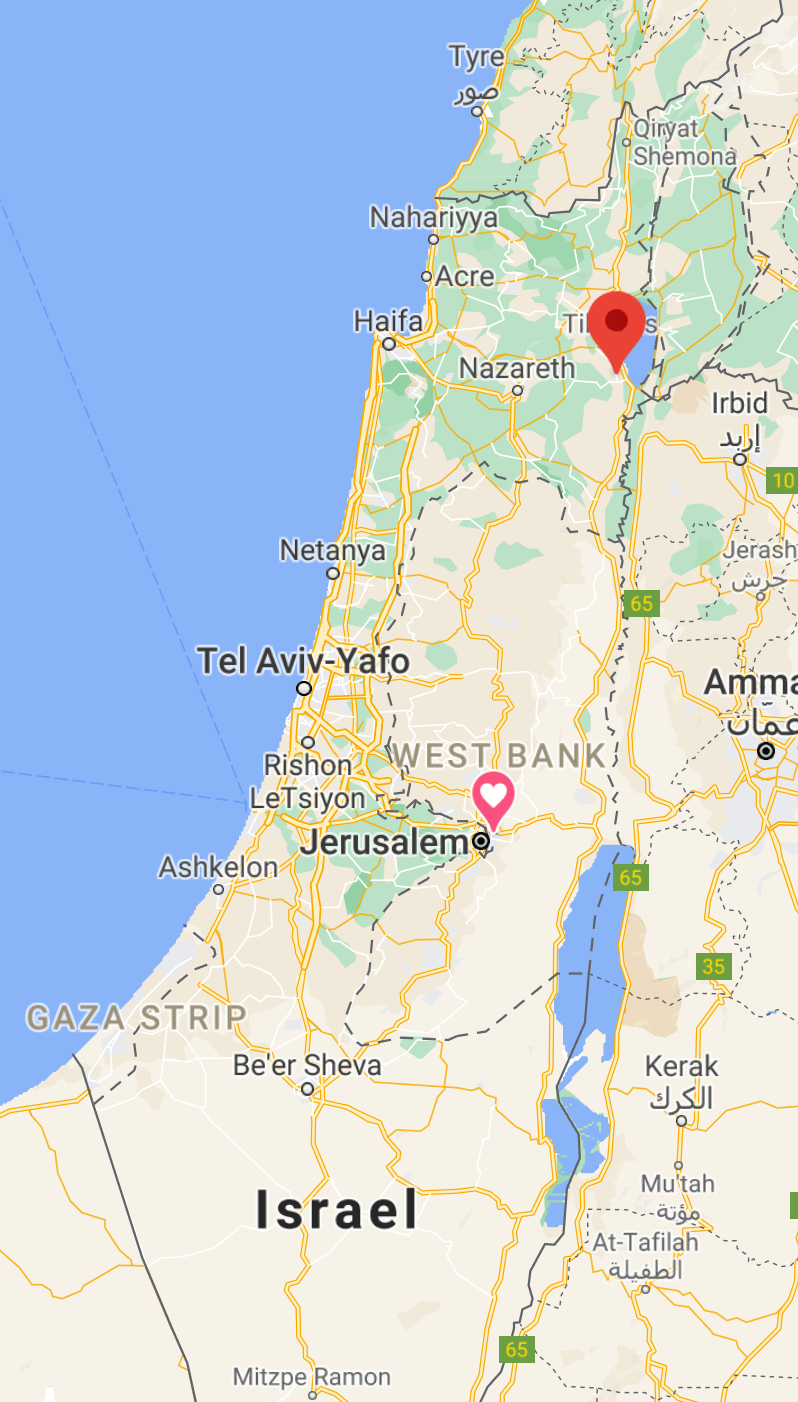
The new moon of the month was seen on February the 13th. Now, a week prior to that, on February the 6th, Becca was in this field. She found patches of barley that in her view qualified as soft dough or above. It qualified as aviv barley. We can see it is still tender, young, and green but it is starting to turn golden which indicates to us that there is development in the head. Then Becca comes and she does a much closer inspection on the grain head. She found that there was substance there, there was something to parch, and it was substantial. There was something to parch and you could grind it into flour, and it was viable as seed.
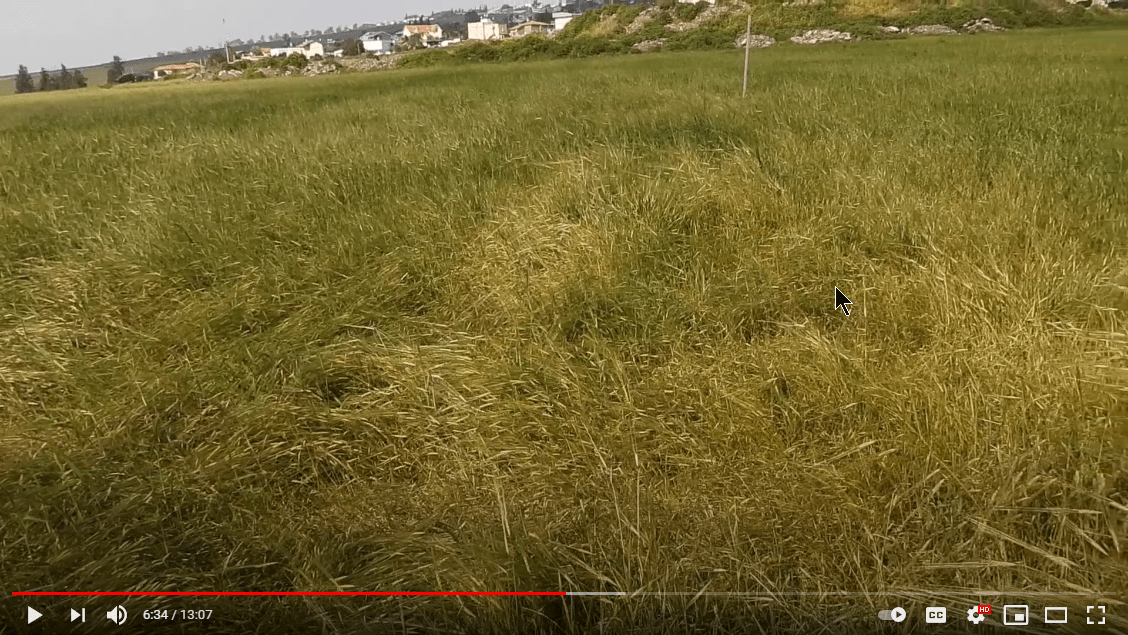
Now, Becca is here with us. Becca, if you could share with us your inspection results of that field. Let me explain to you, what I would like for you to focus on. In the video that we took down, correct me if this is wrong, originally the field was one piece. I can just see Yahweh’s hand all over this. There was initially ripe area here, and there was later a fence that went up in the field cutting the field into three parts.
“That’s right”. (Becca)
This area was bulldozed so the ripe barley, the aviv barley, that was there was taken out. There is also some aviv barley that is inside the fenced area now. There was another search and then there was a big section further down that was also more advanced.
(For this image I just put little green rectangles anywhere and the locations are off) but what I was trying to indicate is there was another search.

Is it okay to mention her name? I do not even know, she is very upset, but there was another search team that came into the filed, Devorah’s Date Tree. We do not understand what they did, but they searched this northern area. She does not want anyone using, reproducing, or taking screenshots or anything of her video report which to me makes it extremely difficult. I am trying to qualify witnesses. I am trying to qualify: do we have aviv barley? Do we not have aviv barley for my people? For the people who follow Nazarene Israel, I need to declare is this the first of the year, or is this not the first of the year? I am getting good information; I am getting help from Becca Biderman. I am not getting any communication (at least not friendly communication) from Devorah’s Date Tree. I have got a witness from Becca Biderman saying we do have (or we did have) aviv barley, and then there has been a lot of action here.
This section of the field was bulldozed. There is a gentleman who lives in the area. A man from Nazareth, a very nice man, apparently this is his field. He is allegedly bulldozing the field today.
“Allegedly he was supposed to bulldoze it. We actually [now] have another [a second] witness to the progression of this field because Cindy was in there with me yesterday morning. And we took out 30 liters of ready barley heads, with the sickle and I have got the cut on my finger to prove it was with a sickle”. “It’s actually not any longer just my witness. Cindy was also in there too helping me harvest the barley yesterday”. (Becca)
The following photo is from Becca’s Facebook page: “In Search of His Ancient and True Path- from cover to cover“. She has various videos and of course it is all arranged chronologically. She has two videos; this one is eight minutes. This is barley that you pulled out of that field?
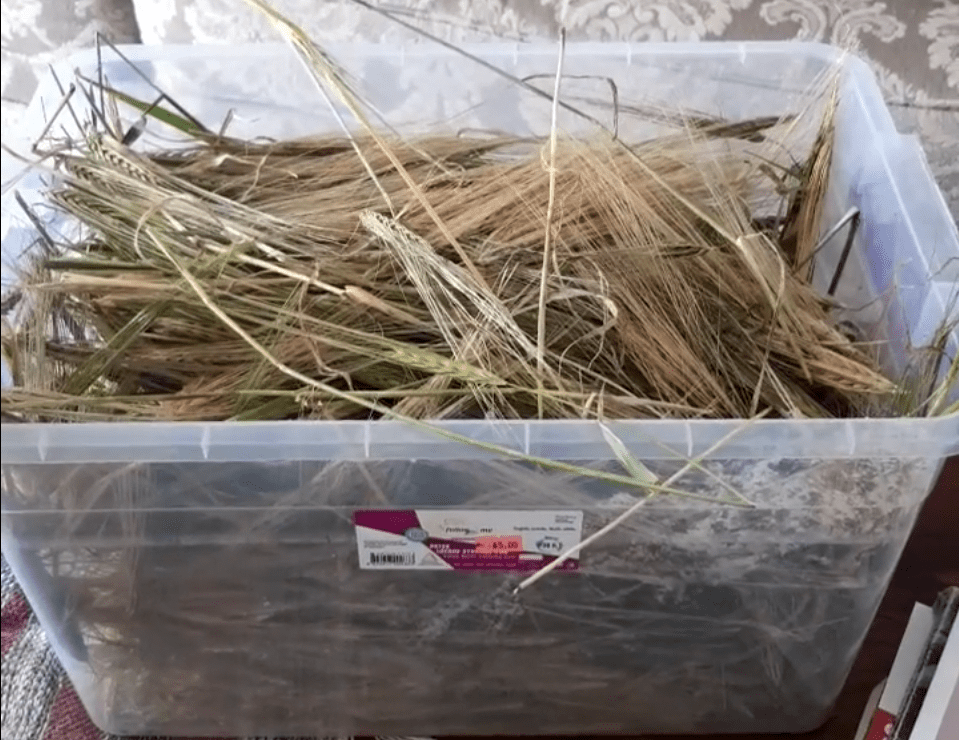
“Yes”. (Becca)
Then you mentioned something about how much of the field is in this condition or what it was?
“Cindy and I did discuss this; I wanted her opinion. And she said like I did, a full one-third of that field when we were there was in this condition. A full one-third.” (Becca)
In your opinion there would be no question that there was aviv barley here for a wave sheaf?
“Not at all, no not at all. Remember the one (video)
that I had made, the original video on that said, ‘Enough for An Omer‘, when I was finally convinced it would be good? We lost all that barley because the bulldozer did come in there and plowed that out. He made a parking lot in that specific area. We lost all that barley. And now again, I do not know if it is still there, but the day we were there gathering it (yesterday) he said he was going to be bulldozing it. He bought that property for a family-like park. They are going to plant trees there. He already set up a picnic area and he feels like the barley is going to grow, rot the nutrition from the earth that the trees need, and he said it must come out. He is going to use the bulldozer to raise it. That is the story, but when we were in there yesterday a full one-third of that was just like you are looking at in this tub right here.” (Becca)
This was a 30-quart tub was it? (“30 liter”). In your studies how much or how big is an omer?
“It is it two liters of flour only, something like this, it’s not very much. From what I roasted that first time, what I brought home was maybe an eighth of what is there, and it yielded a full cup and a half. You must evaluate the field on a yearly basis. Looking at Re’im some of the grains are awfully puny and they would not yield much flour. Even though they are ready they would not yield much flour, but in this field, they were fat and beautiful. Beautiful grains of barley and so just a little makes a whole lot.” (Becca)
Becca has on her Facebook page a chronologically ordered listing of her investigations of the land of Israel. Everything is open and she will communicate with us about it. This is the reason, if anyone is wondering, why we are going with Becca Biderman’s witness. We have got everything that we need to see, and we are able to ask questions. We have this open and what appears to be honest communication which we are not able to get that from the other three groups. That is a, what do you want to call it, a no-brainer? That is a hands-down kind of an indication.
“There is another one (video footage) that just shows how very brittle, the second one, I just kind of show the condition of the grains themselves.” (Becca)
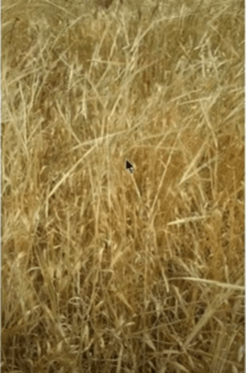
This is important because I think a lot of people might be wondering. We have these three other groups that are looking for the barley to be golden brown. They say you have got to have a field ready for the combine (for harvest). Come here to the barley in 2017, you were saying that this is 2017. This is the year you trained with one of the other groups and this was the field that they were calling aviv. To me when I look at that I see nothing tender, nothing green, nothing immature. I see hard, I see brown, I see brittle or golden. (“yes”). That is right for the combine, but you were talking about sickle harvesting. You were saying that in ancient times that does not work because you are going to gather up your sheaf and you are going to hit it with the sickle. Can you tell us more about that?

“Yeah, you just grab a handful. We had talked about this on the video we took down. We have had that few days of heavy rain that brought a fresh snow to Jerusalem. In higher elevations snow was above 750 meters or 2400 feet. We had no snow in our area, but we had heavy rains and winds. It is not uncommon this late in the season that when there is such meat and weight in the heads and then the heavy rains and the wind come it mashes them. I can just reach in with a hook of the sickle, pick it up off the ground, bring it to my hand and then you rip it. You hold it by the head or the base of the heads you know, and you have got to rip it with that sickle. It is a jerking motion, it’s not a tender motion, you’ve got to be able to do that with the grains not shedding.” (Becca)
To tie that in, you were talking about the condition of the barley. I believe when we were watching this video you were emphasizing that you cannot have the barley too ripe or else even when you gather the heads together, they are going to be brittle and fall out. Can you talk about that?
“Right. If you grab them with your hand and they are brittle, the heads are going to break in your hand. Just that act of grasping them. Then maybe you have got them cut, but when you put them down your heads are going to be in at least two pieces maybe more. You see me twirling my fingers here, how easily these shatter. You are probably even going to have some shedding at this stage, just that little pinch and look what happens.” (Becca)

Even though it is still somewhat green when you are gathering the heads together, when you are gathering the heads together to get ready to hit them with your sickle, and it is at this stage, you are still going to be losing some of your barley.
“This barley that I’ve targeted was riper than I would have chosen to harvest. What I took from the field was the ripest barley. The reason I took that is because at Wave Sheaf this is going to be our barley for unleavened bread, after Wave Sheaf date. Basically, yeah, that is what I was doing. The purpose in taking it was more for my household use and because there is some beautiful barley in that field and that field is not going to be there next year. So, I am going to preserve some for planting.” (Becca)
All this barley should be viable? Everything in that bucket?
“Everything is, beyond a shot of a doubt”.
(Becca)
I am just mentioning this for if anyone wonders what we are calling aviv barley. That is what we call aviv barley because that is soft dough or above. Then some of the other groups are looking for everything to be golden-brown with maybe a little tinge of green but basically ready for the combine rather than the sickle.
“If you’ll go to the top of my page, the last year I was with the messianic group on the left-hand side, that is their aviv barley.” (Becca)
That is their aviv barley, and then tell me what stage that’s in.
“That would be indivisible by the fingernail, or you know what, at this point it may not have been indivisible. It was pretty much on its way I do remember that. But we were also inspecting at the end of a month, so we still had time before Wave Sheaf Day. But this was very, very advanced, very advanced.” (Becca)
Around hard dough, or?
“Hard dough, hard dough I would say, yeah.” (Becca)
Very hard or just hard?
“Very, well you could still divide it by the fingernail, but it was, I remember it being leathery. So, you are at the end of hard dough. Yeah, for me when it is leathery like that and it is resistant to cut, there is nothing left but you know indivisible, it’s at the end of that hard dough.”
(Becca)
What should we do now with regards to the conflicting witness that we get? There was another barley team. We already mentioned them so, Devorah’s Date Tree came in. Where in this field, this patch right here, where in this field was that located?

“It would be about where that gas emimblem is, if you came down into the fence off area and then come straight down.” (Becca)

That was fenced off. The other barley team was not able to inspect that but should have been able to see that through the fence?
“Oh, it’s a chain link fence, yeah it’s completely transparent.” (Becca)
Okay and then this is the gas station, is on a bluff?
“Yeah, you can see if you look at your picture, back over here, that this is an elevation. I am shooting up hill, you can see the incline, so looking across the field from that location your kind of looking down and out over the field. When you are standing on the far north end of the field that is the highest end of the field. You are looking down and down across out over the field because from there it is all lower. It is not like you know, there are no houses, there are no structures, there is nothing, it’s just a straight view.”
(Becca)

If I understand what you are saying, you are saying there is the high ground and there is the middle ground. When you are standing up here you can look and see the whole field.
“Yeah, you have a straight view.” (Becca)
Even though there is a chain link fence.
“It’s just a chain-link fence, you can see it’s a chain-link fence.” (Becca)

When you are standing on that bluff, it is not that far, it is like 150 meters or something, maybe 200? Let me let me use google maps. I am going here is 50 meters, and this is that bluff, I am just ball parking at 50, 50, 50, and then here’s…
“150 meters, that’s good. See the little bus emblem on the west end, it is on the west end. It is longer because you have got that curve, but I will give you 150 175 meters all total probably. And it is all downhill it’s a slope.” (Becca)
If someone were to ask you, if you had trained observers standing on this elevation, should they be able to see this?
“Yeah.” (Becca)
Thank you.
“Yeah, and the other thing I do want to mention is about the ability of the barley to stand back up after you’ve walked through it. I was there on the 14th after the Date Tree Group had inspected and I could not even tell where they had walked, I couldn’t even tell they’d been in the field, barley is so resilient.” (Becca)
If you could help me with that. As I watched this video that I am not allowed to reproduce any part of, I am not allowed to refer to, I am not allowed to these kinds of things. But there was some mention at 22 minutes and 20 seconds. She was in a different field at 20 minutes and 30 seconds, and she mentioned that they were going to look at other fields in the area to compare it to. I do not know why they were not able to spot your barley. And then at 22 minutes and 20 seconds she is in a different location and then she says the field had been touched, is there something? Am I missing something, what does it mean that the field has been touched? Do you know what she is referring to or not know?
“I have no idea. I can tell you that I have been in that field since the 24th of December. I have seen four wheelers in there, in fact some place I have a video, I almost got run over by a four-wheeler. He come around the corner flying across the north end of that field and I was standing there and almost got run over by him. There has been absolutely no other farm equipment in there. There has only been a tractor that was in there the day I harvested all the barley we just looked at. He is the one that is scraping the surface of the earth and made any other tracks in that field. It has not been sprayed with any kind of round-up, any kind of pesticide. Because you must remember he is planting that whole thing in trees. He is not going to put hormone on there that’s going kill, he’s going to scrape it just like he said.” (Becca)
I think what you are referring to is at 19 minutes and 22 seconds. There was a suggestion that perhaps the field had been sprayed and that that was the reason that the barley was turning golden brown. But that is not the case because you have been in that field?
“That is not the case, it is not the case, 100 percent it’s not. Okay remember, I visited with the owner of the field.”
(Becca)
I understand what you are saying, I am just trying to make it clear. Thank you very much for that Becca.
Becca has been inspecting in the Re’im area. So, for those of you who are new to the whole aviv barley scene, this is what normally happens, in the land of Israel and then with Jerusalem.
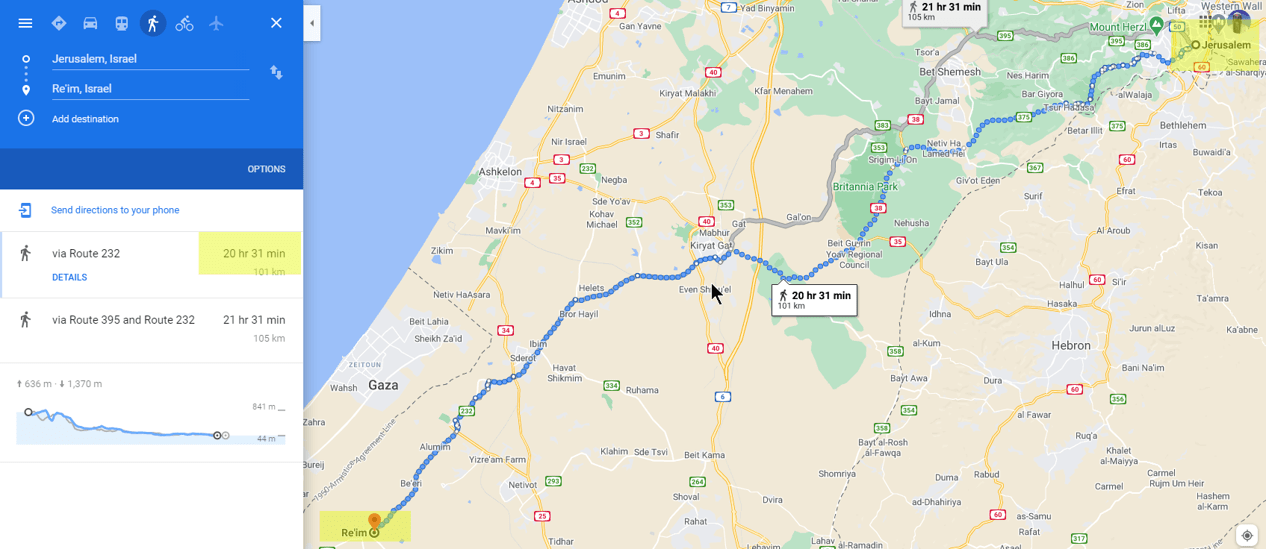
Becca is up in Poriya Illit. But today she and her partner Cindy are down here near the Gaza Strip. Quite oft, in an average year, the barley will become ripe first maybe down here in the Gaza. (You will hear these names mentioned a lot: you will hear mentioned Sderot, you will hear mentioned Re’im, you will hear mentioned Dorot, these kinds of things. There are also some places that you will hear mentioned on the pathway down to the Jordan River valley. The other groups will disqualify the fields in the Jordan River valley for reasons that I cannot understand. I do not understand why they would disqualify Jericho because they use Jericho as one of their proof texts in Joshua 5 verses 10 through 12. To me if the barley is valid as a proof text in Joshua 5 verse 10 through 12, how can you disqualify it today? At least one or if not both messianic groups call that goat grass because there are too many rocks in the field or something. I do not understand that I am not able to understand that. But there are some other places that you hear about down in the Jordan River valley. Historically back when I was training with the Karaites, back in I believe it was 2003, they would at least inspect down here back then. I do not know if they are still inspecting down here now or not.
But anyway, coming back to Re’im. Becca and her search partner Cindy are in the Re’im area. She is going to describe some things to us.

“Last year was a huge learning curve for me and we had pretty much the same anomaly this year. We have had a lot of years without rain, much rain at all. The Kinneret (or the Sea of Galilee) was so low that there was talk there of desalinating water and using the pipes that they used to use to carry the water to the residents. To carry the desalinated water into the Kinneret, we have been in just a severe drought. The last two years we have had copious quantities of rain, the way it has fallen has not been very favorable for the barley.”
In this area right here that we are looking at [Re’im], I went down to see the Anemones, the Kalanit as they are called in Hebrew.
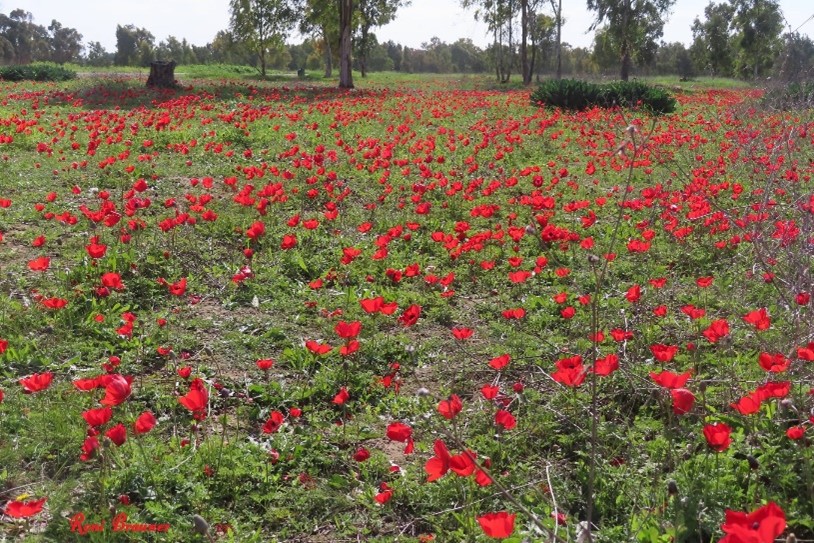
That is something we need to speak about. That season has passed already in Israel. We went to Re’im, we went to Be’eri, we went to several places. And the tourists walk up come to me and say, “where were the Kalanit this year?” And I said they should be back over here, and she said, “no there are none”. And so, the Kalanit season is already over this year. That speaks to us of the progression of a season. That is important because the messianic group, (I refer to them as the AB messianic group), one of the things that they look for is that 30 days before the barley is a beep that the anemones are in bloom. The anemones are finished. They are gone. They are finished. There are a few undersized anemones left but there is not the carpet like you want to see a month ahead of the barley.”
“Now back to that whole field, what I learned the last years, I come to see the Kalanit and I’m standing there I’m looking at yellow barley. That is yellow with the root and it is sick. And I am suddenly having this epiphany. All the raised clubs of barley were elevated and what was not on a little elevation had almost drowned. It was the same way with the oats, there were sick oats, and there were healthy oats. There are the oats that are almost drowned and there were the healthy oats that had a little elevation. I looked at this and I prayed about it. I realized last year that if I could find a flat field at an elevation or a raised, like we were given in the north this year, that we would find a beautiful field of barley.
I mentioned the north because I was back in these areas today and I am seeing the same phenomenon. There is barley that is hard dough-medium dough, it is very short and there may be three or four grains in the head. But they have come out after that first rain. After almost having drowned and then having 30 days of no rain these little guys worked like crazy to push that little head out of the boot. There are these little barleys right there on that corner. Little, I mean literally no taller than my hand with three or four grains that are almost as hard as a tack. Just short of being a beep, very hard dough. And then there’s taller barley again that came out later, even in bloom that came out later with the rains that again, came later. I went to Re’im Park and I saw the same thing, there is barley that is approaching the stage of dropping there. And there is a later flush of barley that is flowering and that is exactly what we saw in the north. Exactly what we saw in this field, do you remember that? There was an early presentation and then there was a second presentation.” (Becca)
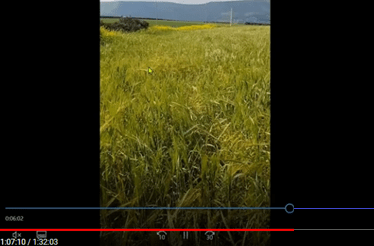
Do you want to give me a second for the new viewers so I can help them understand what you are driving toward? My understanding is that the barley is a living thing, and it wants to reproduce. Given a normal average year, that never exists, it will grow normally and then it reaches a certain point when the plant is mature and then it will want to push out babies. Given a hypothetical average year that never exists, with average weather that never takes place and with an average barley plant which does not exist. (Because you have the ancient two-row they call barley, and then you have the modern six row which is a hybridized type of barley). Barley is a plant, but it is a living thing. It wants to reproduce itself. Basically, it wants to push out seeds. But if you have an extreme year, a difficult year with either a drought year or too much rain or these kinds of things, it is going to affect the barley’s development cycle. You can have what in my understanding are called different flushes of barley. What can happen is, if the barley is stressed it can hurry up and want to make babies even though it may only be this tall and even though it may not have enough energy to create a full head.
We have been using the example of Yossi Cohen, he is the head of the Mossad, but we just came up with his name and it seems like it works.
Suppose Yossi Cohen was back there in the days of King David or the days of Yeshua. Or maybe the days of Joshua, they were still at war, but of course they were growing barley in those days. But in any event, if you were back in ancient Israel and this is your field and you have all these mouths to feed, (say Yossi Cohen and his 12 children), the fact that the barley is only this tall is not going to be a disqualifier for you. If you have barley and it is ripe and it is this tall and you may only have three or four grains in the head, you are going to harvest it because that is just what they did. This is your field; this is what you must eat. You are not going to say, ‘I’m not going to eat that barley because it’s only this tall and it’s only got three or four grains in the head’. You are going to thank Yahweh for his provision, and you are going to bring him the first fruits of what you have so that he will be pleased. So that he will sanctify the field and he will bless the harvest and this kind of a thing.
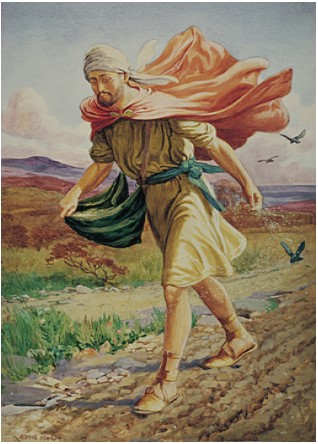
Also, I believe Becca’s talking about this (just for example). You could have an early season and a lot of rain and part of the barley starts to come up. Then you could have a drought, or something happens, and this barley wants to hurry up even though it is only this tall. But then you start to get normal weather again you get what is called a second flush of barley. You are going to end up with barley that is this tall and ripe. Then you are going to have barley that is this tall or taller coming in later. You must be sensitive. You cannot disqualify this barley because you want this barley. Because you have some idea that you want to wait and see this barley be fully ripe, and so you must let this barley drop to the ground or something like that. That does not work. Because, if my job as a priest is to take care of Yahweh’s people, I do not want to be in the position of telling Yossi Cohen, “no sorry you can’t harvest your barley, you can’t eat that“. Because it does not meet my hypothetical ideal of the barley that I would like to see. This is again one of the problems that we and Nazareth Israel have with these other three groups. I am trying not to say the wrong thing, so back to you.
“I understand completely. From looking at that field and seeing the short barley with the little, little, bitty pieces of grain on the end of it… let us talk about Yossi Cohen. He had better be on his face repenting! The rains that we had this year were not conducive for growing barley. Even though the regular domestic wheat has huge yellow stripes in it, even it has suffered from the rain. What we are looking at is, (thank [Elohim] he is generous), we get to look at the barley when it is beautiful and when it has rain at the right time. And we get to look at the barley, what it would do if things were not right. And if things were not right it would be because we were not right. We have gotten to look at both scenarios in the last two years. We have had too much rain in too short a period, and we are getting to see what happens to the barley under those conditions. But that does not mean it is not food.”
“Re’im has enough in the park area, that specific location that the sheep and things were in last year has enough. This is the park where everybody goes for the anemones and to see the barley. It is up there where the other 232 is, in that area some place just before Be’eri. Which we were in Be’eri too today. There was not a lot going on in in Be’eri as far as grains to be seen. It has not been a conducive year. But the point is, in Re’im park in that rest area, it is a rest area as the way it is presented on the road, there was enough. Cindy and I both said with a dunum approximately of territory that was in that advanced barley, there would have been enough for an omer there today. We did not need it because we already had the field in the north and the field in the north is much, much, much, much, much, much bigger than that.” (Becca)
Right, for people who are new a dunum is about a quarter of an acre.
“Yes, it’s about a quarter of an acre. yes.” (Becca)
Okay, now. Becca is going to share her videos of what was in that field. We will go to the red triangle first.

“Now we are in the north section here because we are close to the gas station. This is the north end above the fencing, you can see the fencing. The day that I was there you can see that the general color and overall appearance has changed from a vivacious green to a more of a dingy green. You can see that the plants are starting to be a little older.” (Becca)

They are getting ready to turn. And what was the date on this?
“This was the 14th so this is the day after the new moon was cited. This was Sunday, yes. By then I had unfortunately seen the video in question. And I am just showing here that the gate is indeed locked. No, they could not access that area, that is very true. But in my mind, I am looking at the colors and I am comparing apples to apples. Okay, and I am wondering in my mind why things appeared to be so mysterious at that point”. (Becca)
I do not understand that either. I cannot say what is going on in anyone else’s heart. I cannot say what their motivations are, but I have questions as to why it was so hard to find qualifying barley.

“This patch of this barley by the way is all the way over on the east side. That is the road that they put in right there [see following photo]. But see look at all this on this east side of the north end how many brown areas there are, it was not just one area.” (Becca)
If I understand what you are saying, you are saying that this is three days after the conflicting video that we are not allowed to reference.
“Yes, and there are tractor marks from the bulldozer that had been in there, very heavy equipment did crush and damage that barley that was not previously damaged.” (Becca)
Right. I am looking at this and what I am thinking is three days. Yes, barley does ripen quickly, but…
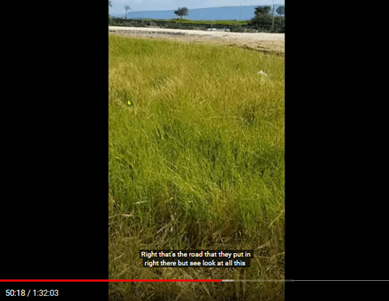
“But we were also just coming out of some really cool weather.” (Becca)
I am looking through the fence and I am wanting to say, “hey check Becca, check that patch“.
“And you can see to the road, see that truck going by? [see following photo] That is the road below the curve, that is going down to Yavniel and that is a decline. The view to the end of the field is where that truck is.” (Becca)

I am looking on the far side, you go right there and then you can see that chain link fence in the distance. I do not know how many meters that is, maybe an additional 50 meters. But looking through that other fence I am seeing yellowish barley on the far side of that other fence. There was one mention where they said that they were going to look for other fields in the area to compare it to. If I were a trained observer, I would look through that fence. If I wanted to compare it to other fields in the area, I would look through that fence and say let us check that barley right over there on the far side of that fence. Because that looks yellow. Would that be a reasonable conclusion?
“Well, if you want to know what I do when I inspect, I section the field off and I travel a path through the entire field from top to bottom” (crisscross it). I have inspected this field three times and I start at the north end. I walk down the west and I come back up the center to the gas station on the north end and I go to the east side and I walked out back down to the south end. I crisscross that field full length every time. I look at it because I want to know what is developing earliest. In my experience I know that barley fields do not ripen uniformly, and I know that there are always early areas. In my world, I do not feel like I have done a good inspection in a field of barley, unless I have walked through it and sectioned it off and looked at all of it.” (Becca)
I do not understand why that far side was not inspected, let me just say that I do not understand.
“Let us go to the next video. This video is just going to show the mid-section and how easy it is to get past the fence. This fence right there you can barely see the poles and you see I have an unobstructed vision to the north end of the field.” (Becca)
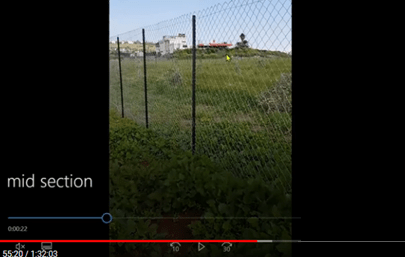
Where are you in the field?
“Behind this fence, do you see these little poles? That is the north section, that is where we were just at in the video. This is west (west side of the fenced section). I am walking southward.” (Becca)
So, what you are showing us is how easy it is to walk around that?
“To pass around that, yeah. It is very easy to pass around that back here, it is just a plow field there is no obstruction, very easy. Of course, I am looking at his trees and I am upset because I know we are going to be losing this field. And indeed, he has run this fence all the way down to the road now, it goes all the way down to the road. But if I ask him if there was any barley left and I saw him there he would let me in, he is a very nice man. Let us go to the next one.” (Becca).
What I am getting out of this is it is very easy to walk around that fence, there is just no obstruction. If you are standing on the north side of that fenced area and you are looking through the south side and you are saying?
“You have got a clear view.” (Becca)
Then as it runs then you turn, and you show the south edge and you just keep walking around and there it is.
“Yeah. At a distance, the chain link even disappears and if you go look you cannot even hardly see where the poles are on the north end now. We will go to the other one. This is the south end. What I am just looking at here are these brown areas, I’m talking about how golden this barley is becoming.” (Becca).
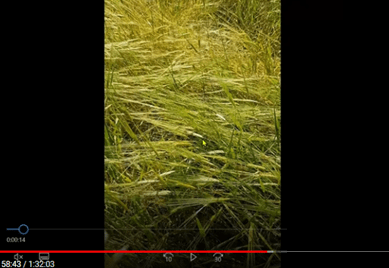
Yes, now this is on the south side of the fence. When you are at the gas station, when you are up on that little promontory there and you look out over the field, even with that fence in there are you able to tell that the south end is more advanced? Or not really?
“There are some hills, stones and things like that. They had at some point in time bulldozed out of this field to make it level and to make it less stony. [Yes] If you enter from the gas station, which most people do because you do not want to park on the side of the road. As soon as you enter the field coming out of that gas station parking lot, yes, you have a bird’s eye view of the whole field. Without any issues. It is easy to tell. It is a big field; it is very easy just how big it is.” (Becca)
Okay, I just want to be crystal clear about what I am asking. When you are parked at the gas station, you are either standing on the promontory or you are coming down, you have a bird’s eye view of the field. Can you say that the north end of the field is greener, and the south end is more golden or is it not really?
“I don’t know if I have ever stopped to notice that. I really cannot answer that question. But the last time in this video series here, the north end had some very brown areas on the east side and more than one. We saw them in the video from the north side. There were several places on that east end of the north section of the field that were becoming golden.”
(Becca)
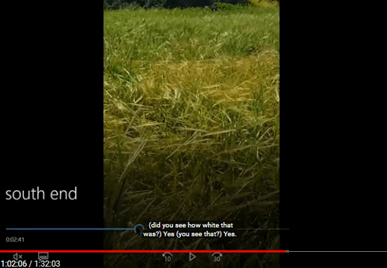
“This is the new growth; we were talking about the second flush. I am checking some of this that is more mature, and you can see that it is just coming apart very easily. And so, what I am doing now is I am just walking around and showing these sections. You can see it is getting golden here, this is the first flush. If you look right here can you see these little ones sticking up? There you can see some new growth in there too. But what is laid over, this lighter stuff is the older growth from the first flush”. (Becca)
And this is the south end? “Yes”.
This is what the other team did not see? “That’s right.”
“Here I’m just showing all how brown it is. That is what I am saying when we were in there cutting the barley the last day. A full one-third of this could have been harvested by now.” (Becca)
And we are still ahead of the wave sheath.
“Yes, yes. Look at how brown this is here.”
Right, and there is no way that this would make it another month?
“Oh no, no, no, this wouldn’t have been there, it would be shattering by Friday anyway, it’d be shattering. Did you see how white that was?” (Becca)
For the people that are new, what that means is the Passover, and the Wave Sheaf must take place this month. There is no way this barley is going to stay.
“This barley right here will be gone. There will be the new barley next month, but you will have lost a lot of barley, I mean a lot of barley.” (Becca)
Right, and the point that we are trying to make is that in ancient times Yossi Cohen and his 12 children need every grain to feed mouths or to sell or whatever they do with it, so, yeah.
“Let us just talk about that a second. Most people do not understand that in ancient Israel they subsided on grains the way that Asia does rice. We have only got a very small green window and the rest of the time those grains were the stored food that they lived by. You could not afford to allow any of this to waste.”
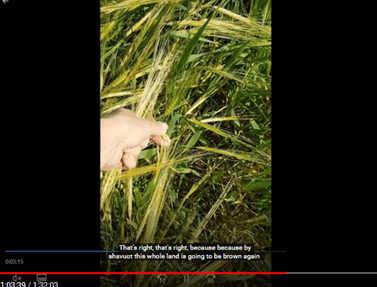
Waste not want not.
“That’s right, that is right. Because by Shavuot this whole land is going to be brown again. This year it is going to be finished till the end of the 10th biblical month or the 11th biblical month, and then we are going to begin to see a little green again. All of this from Shavuot until when that happens again, they are eating the grains they harvested.” (Becca)
If you do not harvest the grains, you are not going to eat or you are not going to have anything to sell or whatever. But this is what Elohim gives you, you must make the most of it.
“That’s right, that’s right. Exactly right.”
“That is some of the newer barley I’m showing that’s come up within the older barley. And we talked about this in the video we had to take down. If we had harvested the barley when I did the video ‘Enough for an Omer’ (on the sixth), this new barley that is standing straight up and has no meat in it would not have been in the way. It was not out of the boot yet. If we would have harvested that barley at that point right, then the new growth would not have been in the way. Now the new growth is in the way.”
(Becca)
Now it is hard to harvest the first flush because the second flush is growing up and is getting in the way. The green stuff is getting in the way of harvesting the earlier stuff.
“You can see the further east we get. Look at this over here, as I have always told you it ripens in the east first and you can see how just golden that is now and that was on the 14th.” (Becca)
Right. Okay, so this is what the other team missed basically, all this? All this on the south end and it is easy to access, it is easy to get to, it is easy to see that it is there.
“Yes. That is about it, I think. I pretty much end it there. But you can still see sprinkled throughout that whole field that early barley that was ready on the fifth or sixth or whatever it was. And then the new standing up straight stuff that has no meat in the head. And that is why it is standing up like a soldier, because there is nothing weighing it, there is nothing weighing the head over so that’s all new.” (Becca)
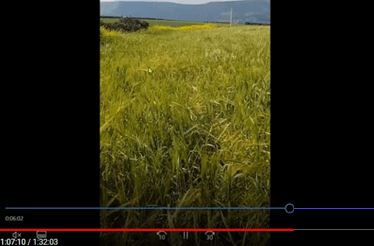
I really appreciate your thoroughness; I appreciate that from you. We talked about this in the video that we had to take down, but the history of that field just sort of seems miraculous. We have had some extreme weather going on, some very unusual weather, anomalous weather. Then of course with all the lockdowns and everything and people are not able to travel around, travel is difficult. And here Elohim just gives a field of early ripening barley very close to his witness.
“I suppose, yeah it was very miraculous it really was a miracle. And not only that but if Cindy were not asleep, she would tell you we have not seen another field as beautiful as this field. It is just an amazing field and I think that our inspector from Devorah Date Tree even says the same thing. What a beautiful field it is because it just, I have never seen another field like this.”
They do yeah, she does mention how beautiful the field it is, I do not have a time marker.
“Yeah, so in closing I just want to say that I think that our biggest obstacle is the struggle to have the most influence and how we see the barley needs to be when it is ready to be harvested from the field. That is our biggest struggle and that is where the friction lies.”
(Becca)
The things that I see is that basically there are four questions. The things that I have been trying to do is to analyze this thing and what is really going on. And how to get to unity, and how can we help bring the different barley teams to search together, if that is possible.
But I see four things. I see definition of ‘what is aviv barley’, because we have got again the four groups and different definitions. We agree that medium dough is aviv because it is still green, still tender, still young. Yet it is parchable, (it can be ground into flour), and it is viable as seed, so medium dough. The other three groups are looking at basically almost within a day or two of combine ripe I would call it. They might not call it that but that to me that is what it looks like.
Then the second question is how much of it do you need? Are we looking at just an omer or do you need harvestable fields? So Devorah’s Date Tree has a publication, I am sure it is copyrighted also, but she hast a publication about harvestable barley. How you need to be able to bring in the harvest because they place a lot of emphasis on Joshua chapter 5 verses 10 through 12. Because the fields were harvestable that year, they make a doctrine that they must be harvestable every year. That pushes everything a month later. To me fields like that in Joshua 5, that is the end of the time window, not the beginning of the time window. Therefore, what is aviv, how much do you need, when do you need it. Who, what, when, where, why, and how, right? What is aviv? How much do you need? When do you need it?
Again, I believe we agree that it is needed by the day of the Wave Sheaf Offering. Or it could be three days before if it is cut up away from Jerusalem and then one is bringing it to Jerusalem. You want to give yourself travel time. Then I am not sure the Karaite position. In the past they have had it to where you need to have harvestable fields of aviv before they will even declare the new moon of the aviv. Even though you do not need the wave sheath until 15 to 21 days later.
“That’s my understanding yeah.” (Becca)
Not only are they shifting it a month back, but they are shifting an additional 15 to 21 days beyond that to the difference between the moon and the wave sheath.
Then there is also a fourth question regarding the condition of the field. Some of the messianic groups talk about goat grass. I am not sure, but I think the Karaites also, and I am not 100 percent about Devorah’s group. If there are rocks in the field (like around Jericho) the messianic groups will disqualify Jericho. Even though they use Jericho as a proof text in Joshua 5 verses 10 through 12, which I am not able to understand that.
So again, what is aviv, how much do you need of it, when do you need it, condition of the field.
To me aviv must still be tender, young, and green like Strong’s says, yet you must be able to parch it (to grind it into flour) and viable as seed based on Yeshua’s witness.

How much do you need? You need a sheaf (an omer’s worth). And then we can talk about that definition. But you do not need a whole field of it. You do not need to bring in the main harvest of Israel, you just need to bring a sheaf. There is a theology to this which we will talk about. The purpose is not to bring in the harvest and then bring a sheaf of that harvest to the priest like the Karaite doctrine. The purpose is to bring the first sheaf which then sanctifies the rest of the harvest, which matches Yeshua’s pattern. Yeshua is our Wave Sheaf, we know that from Corinthians. Yeshua’s offering sanctified the rest of the harvest. Then you have the blessings in Acts chapter two. You have those who were raised from the graves in the first century.
When do you need it? I do not know if every Karaite believes the same or if they still believe this, but they believe you need the aviv at the new moon. Then I believe we and then perhaps the two messianic groups, believe that you need it at the day of the Wave Sheaf because that is the whole purpose.
Then the condition of the field. The other three groups are basically looking at a manicured domestic-like combine ready field. They are disqualifying something that would be like an ancient sickle field. Whereas I believe you and I, we are not looking at combine harvest. We are looking at sickle harvest which very different thing.
Also, I think we mentioned this in the last video but just to mention it again, maybe you [Becca] could talk more about this, but we talk about passages like Ruth. The way that the Devorah Date Tree mentions it, (just for example), they want it like in Joshua 5 verses 10-12. They celebrated the Passover on the Sabbath and then they had the Wave Sheaf Offering the very next day. Then they ate of the produce of the land that year and then the manna stopped. They are saying, well you have got to have that condition every year. The problem is that can work if the whole nation of Israel is already right there together in Jericho because there is no travel time involved. The problem is if you are in Re’im or if you are up in the Galilee or especially if you are way up in Dan or if you are way down in the Negev, that causes a real problem. You could travel for four or five days. If you must walk for four or five days to get up to Jerusalem, then you must go back home to harvest your barley. And then you must come back up and be there seven days later for the seventh day of unleavened bread, you have spent your whole day walking. Then it takes, I do not know, two three weeks to bring in your harvest. How is that possible?
“If I am looking at this the way that the fields have presented themselves from an ancient perspective, for me it’s a perfect scenario to see an early flush of barley bring in that earliest wave sheath. The men have time to travel to Jerusalem, keep the week of unleavened, get back to their fields, and plenty of time for that second flush to be ready.” (Becca)
Right and then they have seven weeks to bring it in and then they bring up the first fruits up to Pentecost.
“That is right and let us go on that whole line a little bit further. We have had 18 years of being an abject drought. I mean so low that that they were finding treasures in the Kinneret because the shores were uncovered. I mean serious drought, serious drought. They were so low that they were afraid that the marine life could not be supported. Because when it gets to a certain point the salts and the minerals are so concentrated that it becomes salty. That is why they were talking about desalinating water and pumping it back in there. That [two flushes] is not what we have had. All our records and all our recorded understanding have come from this time we were in severe drought. Barley does not come in two flushes when we are in severe drought. These last two years with this abundant rain we’ve had two flushes of barley.”
Yes, Now Elohim promises that he is going to return the rain in the end times. My only question was, is Yossi Cohen really going to be on his face because he has got more rain, or is he going to be thanking and praising Elohim because he has got more rain?
“It depends on how it falls because I still say that the rain, even though we’re getting plenty of it, it has not been conducive for growing beautiful grains. The bible talks about the gentle rains and it talks about sending the gentle rains first. You have farmed, it is not rocket science. If we get heavy rains when the earth is hard, the earth cannot drink it. It just runs off (it rolls off). If we get gentle rains first that prepares the earth, then it can drink the rain. We have had heavy rains in the beginning and there has been a lot of runoff and then we had it turn off. The barley struggled up out of the earth and got busy and put out a head. Then after 30 days we had some more rains, but you are talking about 30-day stretches without rain. Very stressful conditions, that we have two waves of barley is not surprising. My whole point is that is what we have been presented, and this is what we deal with, but it’s not ideal conditions yet.” (Becca)
More rain is a good thing, but the condition of the rain is also very important. To get a gentle rain first to prepare the ground to open it up so it can drink in that rain.
“And then not wait 30 days for the next rainfall, that and especially when it got as warm as it did. High 70s, that was a major stressor on that barley. That is what I am saying. If we were ancient Israel and if we were living in right covenant, we were still the apple of Elohim’s eye, that’s not the kind of rain I would be expecting to see on the land.” (Becca)
Yossi Cohen will be asking, okay Father what is going on because you know, appreciate the rain but, what am I doing wrong?
“That is right. But like you said, we deal with what we are presented. And this is what we are presented with for the last two years and the whole understanding of having to have food in the dry season. You are not going to let those grains pass by.” (Becca)
I just wonder what Yossi Cohen and his friends would say if the priesthood in that day said, “no, no, you can’t harvest that grain”, and he is looking at his children like, I cannot feed them. I imagine that kind of a conversation, you know. And they say, “well, no, you can’t harvest it because Joshua 5”, or for someone to say “no, go ahead and harvest it and lay it to one side, but we’re not going to start the omer count”. Deuteronomy 16 and verse 9 says so. And we have all the Talmud references to say that absolutely is not the way they did it back in ancient times. A plethora of Talmud references that is very clear. The omer (the wave sheaf) was the very first thing that was cut. To me it means you must cut it, when the very first thing comes ripe you must cut it.
“That is right, that is right yeah. Where is it, in Romans? It talks about if the first fruits are holy the rest is holy. (Amein) Yes, it’s by the first fruit that we get the blessing for the rest.” (Becca)
Amein. Just like Yeshua is our blessing. Yeshua was our first fruits, and he is the blessing. (Amein).
“That’s right. Yeah, I do not know if we solved much tonight. But I am committed to the fact that we are in great shape that there are no obstacles to having Passover this coming weekend, none.” (Becca)
The way I am looking at it, we must have Passover. Because the barley that you have, the video witnesses of south of the fence, it cannot wait another month. I do not want to tell Yossi Cohen and his 12 children you have got to starve to death, or you cannot pay your needs, you are going to get sold into slavery. I do not want that on my head.
I want to be careful what I say and how I say it. I think we did solve our earlier problem; I think we have successfully shown that there was ample barley. If what we had there had not been bulldozer actioned. If this had been ancient times with Yossi Cohen in the first century or king David’s time. I think we have shown that there was or there would have been ample barley to present the Wave Sheaf Offering.
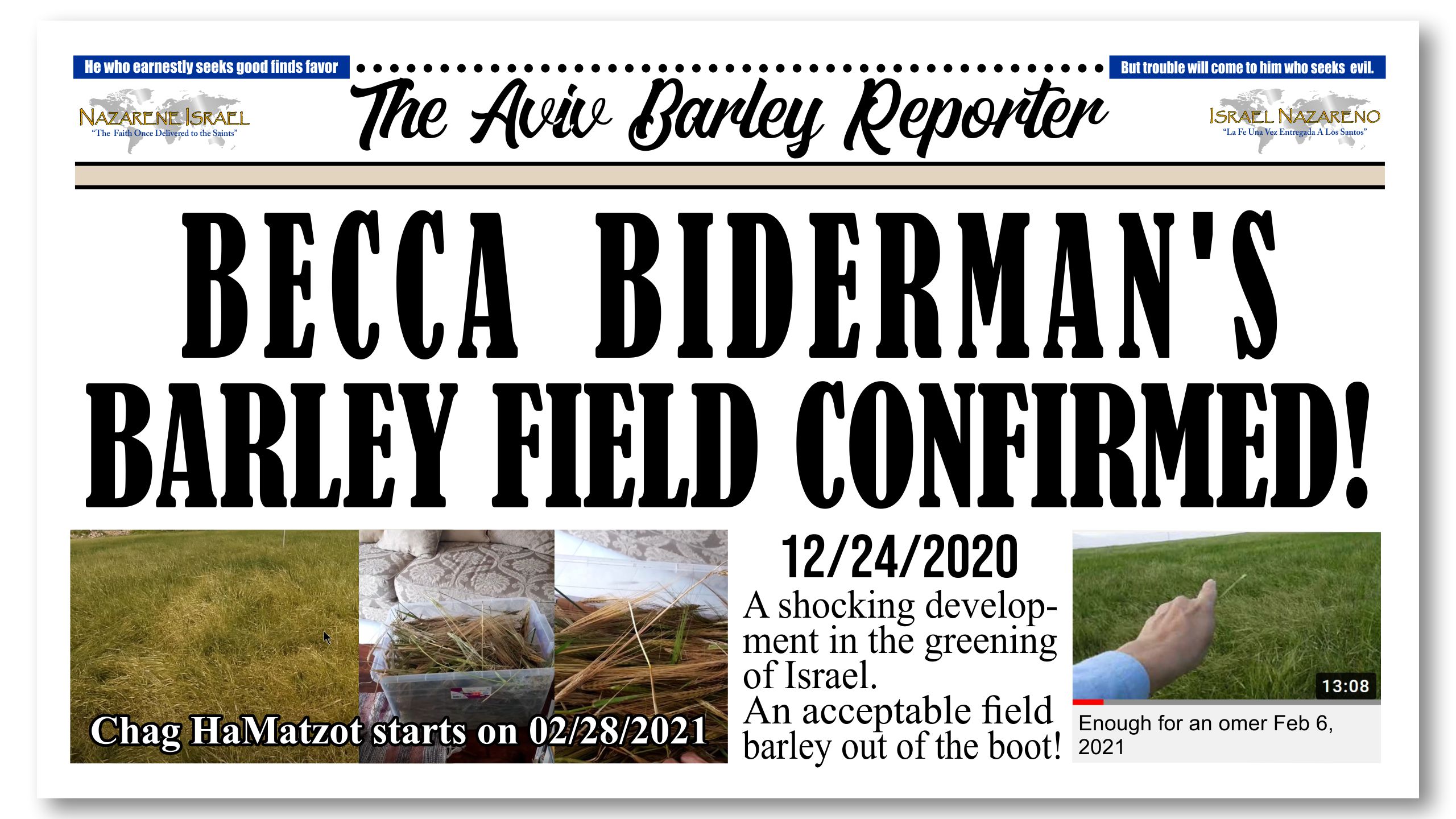
“Absolutely, absolutely. Yeah, absolutely. Because we are still a few days out. I mean we are still a few days out even now.” (Becca)
Right and these videos are from the 14th.
“That is right.” (Becca)
Just for the benefit of the people who are following Nazarene Israel’s establishment of the calendar, I understand that it seems difficult because we have got three other witnesses. We have one Karaite and two messianic that are saying no aviv, no barley, no Passover this month. But according to the video witnesses that you have presented to me a Passover would be this month. At least if this were ancient times and we were doing things in the way that they were done in the first century in Yeshua’s time and as recorded in the historic record in the Talmud. And if people would say you cannot hold Passover this month because it is still too cold, we would just point to the example of Peter (Kepha) warming himself by the fire in Luke 22:53.
Luke 22:53
“Now when they had kindled a fire in the midst of the courtyard and sat down together, Peter sat among them.”
Thank you very much Becca. I appreciate your time, thank you for taking the time. I look forward to seeing your next video when it comes out. When you get everything uploaded and arranged and the video that we saw where we had the looking through the fences at 3:25. I wrote the minute mark down. Is there any way I can get a screenshot of 3:25 on that video?
“Sure, sure”. (Becca)
Great thank you. If you could send me a screenshot.
“yeah, I will send you a screenshot, no problem no problem.” (Becca)
Thank you very much.
Father, I just thank you so much for Becca and Cindy and for their witness and for their desire to witness of your witness, Father. Because you are the one providing your witness of when the year is supposed to begin. You are the one providing the barley, you are the one providing all these things so that we know when to start your year. And Father, I just thank you for their faithfulness, I thank you for their time. I thank you that they are trying to put your witness above any other personal agendas, because Scripture is not of any private interpretation. Father I thank you that she is open, and she is honest, and she is willing to answer questions. I thank you that she is willing to correspond and take up her time to share the things that she has learned with your people. And Father I ask you please to bless them and safeguard them and give them safe journey and safe passage on this trip. Father, you know that Becca, that they must move because of their housing situation. Father I ask you please to continue to provide for them and give them an even better place to live. Father we thank you for all these wonderful things and thank you for showing us when your calendar year begins. Thank you very much Father. We ask these things in Yeshua’s name that we might become better servants for Yeshua our Messiah and King. Amein.
“Amein. Thank you. Thank you for letting me show the field I appreciate that greatly. Well, it is late here so I think I am going to go hit the hay as they say. It is 9:30 but we started early, early this morning before the sun was up.”
And you are inspecting again tomorrow?
“Yeah, I am actually looking for new areas more than inspecting. I am inspecting, I did go back to those two Re’im areas specifically because they were early, and I knew they were early. But what I am basically doing is looking as well for new areas, because Father’s put that in my heart that we have overlooked some areas that need to be reconsidered, because we had an established pattern.” (Becca)
Well like you pointed out, the field that was given to you this year, that was anomalous.
“Nobody has ever looked at that field before.” (Becca)
And it is not going to be the next year either.
“No, it’s not, and I was telling Cindy about that. I said you know the face of the earth changes every year and you have got to just go see what it is. This year there is an awful lot of oats down in this area, a tremendous amount of short spent oats. But every year it is different, and you have got to go look. You never know when something that was planted is no longer planted or even this year, I have seen some things that are planted that were not planted before. It is just obligatory that you have always got to be looking around and be willing to explore new areas because things change so constantly.” (Becca)
Good night, good night, Yah bless.
bye-bye